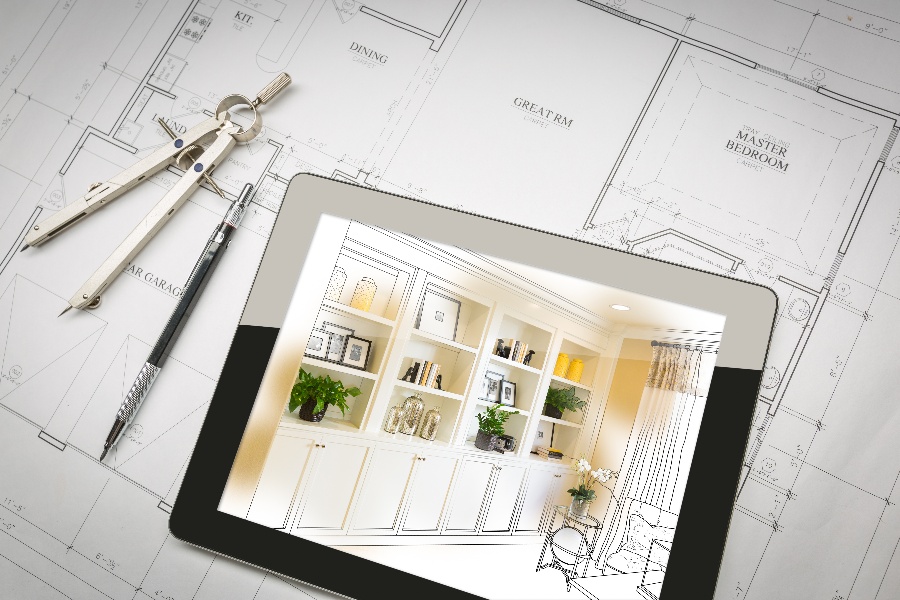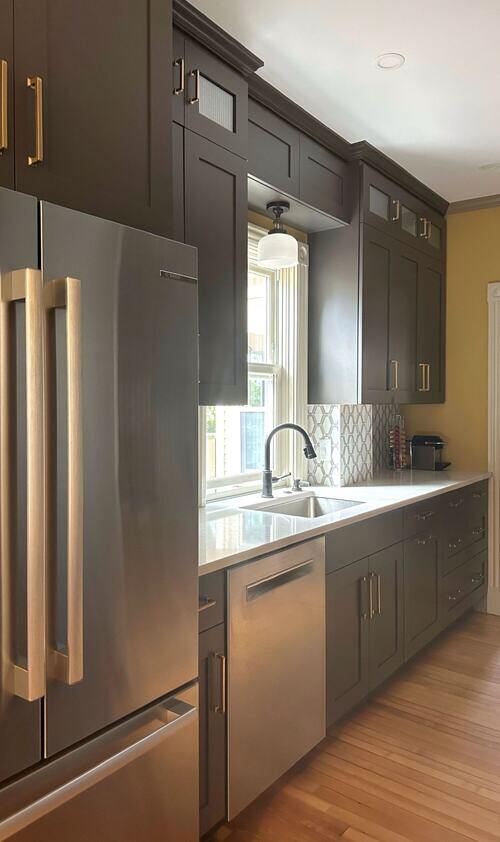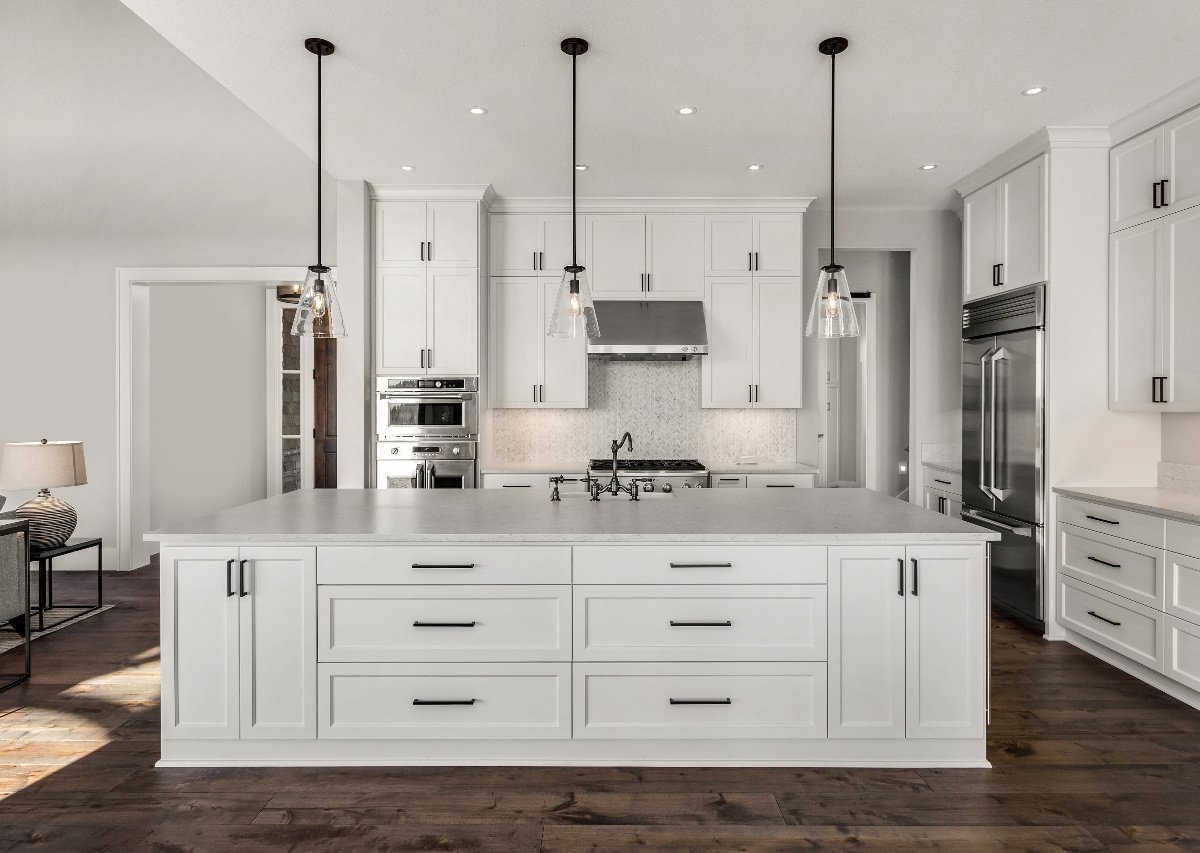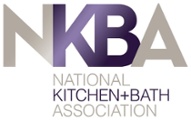[Continued from Part 1]
Welcome back to the second half of our two-part article. Join us now as we dive in from where we left off at stain or paint receptivity of your cabinet wood.
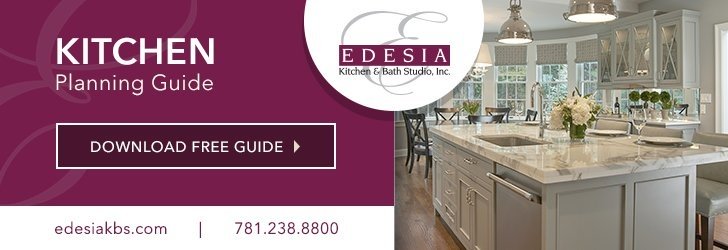
Stain or Paint Receptivity
Some cabinet woods are best when shown off in their raw colors. But if you plan to stain or paint your cabinets, then it's best to choose a material that will receive your finish-of-choice well.
Stain looks different on every type of wood based on the color, grain, and even the density of the wood that you choose. A lighter wood with more porous cellulose structure will also absorb more stain or receive paint better than a dense or smooth wood. Paint grade maple is a great example of this.
You may choose your cabinet materials based on how the wood will look once stained or you can choose a board type that is ready to be painted with your chosen finish and will receive the paint well.
Cabinet Finish Tips:
Remember when planning to custom stain or paint your cabinetry to choose a sealing finish. You may choose a primer that seals in the natural wood before the painting begins.
Your top coat should seal in the finish so that each cabinet panel and drawer is both water-resistant and scratch-resistant over the years of use. Consider a glossier finish so that the surface is easy to clean and can be scrubbed with a sponge without losing color or shine.
Sustainability
Finally, let's talk about choosing sustainable woods for your cabinetry. Sustainable cabinets and other building materials are currently at the peak of both trendiness and practical elegance in real estate.
Green building is a wonderful trend that allows you to reduce the carbon footprint of your home or business remodeling project. Sustainable woods reduce your impact on the environment while also providing beautiful custom cabinetry that you can be proud of.
One type of sustainability is buying local - this limits the transport fuel burned and pollution created in getting your custom cabinet woods to the build site. Another form of sustainability is to choose trees that were sustainably harvested and replanted.
You can also choose fast-growing woods like bamboo or genetically adapted Lyptus trees which regrow so fast that acreage doesn't need to be cut to supply the wood.
Another option is reclaimed wood. This is where boards from renovated older buildings is re-used for new wood projects.
For example, wood paneling from a historic tear-down may be reclaimed to become your cabinetry or slats in your wood floor. Not only is reclaimed wood sustainable - requiring no trees to be cut - but it also comes with a great story every time you show off your new cabinets.
What is the Best Material for Your Custom Cabinets?
If you are planning to have custom cabinets built into your home or business, start with the material you'd like them built from. If you're not sure yet, we can help. Contact us today for a consultation and to schedule a free estimate of your project.
Our team will happily go over your plans, interior design, and vision to recommend the type of cabinet material that would be best in your space.
Whether you are personalizing your kitchen or building elegant new storage for your workspace, we can help you design the perfect cabinets to suit your needs and to aesthetically flatter the architecture and interior design already in place.
Contact us to explore our cabinet materials and schedule a free estimate, we look forward to hearing from you. Your custom cabinetry is just around the corner.

